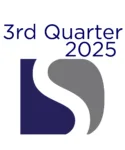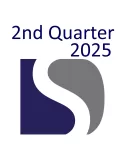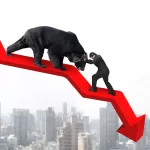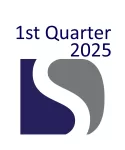Whether your business is in its early stages or you’re launching a new product line, achieving critical mass isn’t your only concern.
While you need to reach enough market saturation to cover costs and establish your brand, if your company develops pockets of favoritism and nepotism or your departments become mini kingdoms, you could limit your profitability and viability.
Formalizing behavior is needed to develop functions, procedures, processes, and protocols. Organizing these leads to business systems, eventually leading to a decision.
However, all too often, the time to decide comes and goes without anyone realizing there was even a choice to make in the first place.
Will the business system become an institution that is revered and counted on through thick and thin? Or will it develop into a bureaucracy, where change is nearly impossible, and efficiency never gets added to the list of benefits?
Business systems, institutions, and bureaucracies 101
What business systems, institutions, and bureaucracies have in common is they are all organizations made up of groups of people with consistent behaviors, organized for a common purpose. How the organization forms influences behaviors and, together with the culture, creates an organizational identity: a basic system includes entities, boundaries, and how they interact.
Behaviors take shape at the intersection of organizational culture, identity, design, and boundaries. Misfits between the organizing factors will eventually drive changes in at least one of them.
Let’s break each one down:
Business systems
Business models become systems when the right mix of capabilities and resources sustainably creates customers and profitably; this is an important distinction because if we make decisions based on how we believe a company functions and not how it actually runs, we waste time, money, and resources.
When the elements of a business model are not operating consistently, it leads to dysfunctional dominance, where something other than customer expectations or core capabilities drives decision-making.
It’s a weakness in the company’s ability to compete when decisions are not based on creating customers and making the best use of resources. Often, functional managers are allowed to bolster their dysfunctional behavior instead of realigning the organization, which corrupts the business system.
Leaders can use their business model to show them where a misunderstanding may be occurring. The Grid by Methodical, or Alexander Osterwalder’s Business Model Canvas, are excellent tools for starting a company or launching a new product line; they also highlight essential elements of a business system.
Not many organizations compare their strategy or business system to the choices or models they were based upon. However, I believe excellence is only achieved by reviewing results against what was intended.
BUSINESS SYSTEMS 101 CASE STUDY: Little Tikes and the batch & queue model versus toy industry fads
Little Tikes prepared for each holiday season by making all of one toy before starting to make the next one on the schedule. To make sure everything was made in time, they started in July and went until October/November. While large quantities of some toys were made by September, some would have little to no inventory. Every year Little Tikes would over produce at least a few items and not have enough of others.
The sales team went to trade shows to pitch products, meet customers, and understand what was hot that season. Accuracy of customer demand improved the closer to Black Friday because the largest show was held in New York around the end of September.
After more than a decade of this, new management decided to make every toy every two weeks. The first year of changing the business model the warehouse finally held a good mix. When the firm orders finally came in, production was able to adjust the schedule to finish making exactly what customers wanted.
It took a new management to question the existing business model and adapt to the last minute orders. When Little Tikes first took off as a company, they could sell whatever they could make. When the Little Tikes market, and after-market, became saturated, customer behaviors changed.
It took a long time for Little Tikes to respond. In that time, sales significantly declined. This decline plus other similar factors caused Rubbermaid to be put up on the selling block.
Collaborative institutions
Collaboration is essential to avoiding bureaucracy. The benefits of collaboration are meritocracy, documented processes & consistent results, impersonality to who a person may be, equality in the use of time and resources, creative solutions, and work-life balance for agents and constituents alike.
While institutions are vulnerable to a downfall by becoming too rigid, they are aware of why they resist change. They possess a self-reflection characteristic that adds value beyond their technical advantages.
The three pillars of institutions are regulative, normative, and cultural-cognitive (based on research by sociologist Richard Scott). It’s easy to see how these pillars can be weakened or exploited when an organization falls short of becoming an institution or when an institution becomes corrupted into a bureaucracy.
Any institution can stand on its own, and while functional dominance can take place within an organization, what’s most important is that the chosen function is representative of the whole.
There are a few different types of institutions to consider:
- Linkage institutions: institutions that bind the value of each institution to the rules of the governing or authoritative body
- Anchor institutions (or anchor collaborations): entities that remain in a geographical location that become relied upon by the community
- Representative institutions: a collection of institutions or a culture
- Supervisory and control institutions: public order protection bodies, armed forces, police, etc
As it relates to business systems, if a function becomes an institution, it should represent the business’s principles, policies, culture, and values. If not, the business will suffer, or the culture could sabotage the function’s purpose.
An example of this is when General Electric’s (GE) financial function became an institution. It accurately represented GE for decades. When GE’s CEO Jack Welch believed he could easily adopt and do the same with Six Sigma—piggybacking off the financial institution—a cultural perversion took hold of the company.
“To institutionalize is to infuse with value beyond the technical requirements of the task at hand. The prizing of social machinery beyond its technical role is largely a reflection of the unique way in which it fulfills personal or group needs. Whenever individuals become attached to an organization or a way of doing things as persons rather than as technicians, the result is a prizing of the device for its own sake. From the standpoint of the committed person, the organization is changed from an expendable tool into a valued source of personal satisfaction.” — Philip Selznick Source: Leadership in Administration: A Sociological Interpretation, 1957, p. 17
Bureaucracies
Bureaucracies are the result of corrupted organizations. As systems are being developed, synchronized, and optimized, watch for common pitfalls to their downfall, like nepotism, favoritism, and outdated or highly officialized systems or functions.
What was considered a benefit of bureaucracies has become quite the opposite. Instead of impersonal, equally applied rules and regulations, it quickly devolves into nepotism and favoritism.
These unintended consequences are due to the political nature of human beings. The people working within a bureaucracy know how best to manipulate the system to their benefit, and they save the best for those they favor (I’ve seen many leaders surround themselves with very loyal, incompetent people).
Bureaucracies are a result, not a goal — and leaders can find benefits from other organizational forms.
The positive aspect of bureaucracies is they protect the people within that system from change that is too fast or more often than they can handle. This protections leads to having no formal mechanisms to tie organizational changes to shifts in customer expectations or even social progress.
There are more flexible ways to support stability and assurance other than red tape and officialism. Examples of this include:
- GE had a finance program that rivaled Ivy League Universities
- Toyota’s manufacturing is a global standard for productivity
- Honda’s engines are used in more applications than any other engine maker (read more about this here)
What causes systems and institutions to become bureaucracies?
Systems and institutions turn into bureaucracies when:
- The voice of the customer is muted, twisted, or lost;
- Capabilities of one department are fulfilled by another, and multiple departments compete for dominance;
- Departments develop capabilities that have nothing to do with the reason the company is in business;
- There is a lack of leadership, and teams are left unchecked and become self-directed;
- Leadership doesn’t take the time to grasp an overall perspective of the business, and are involved in every decision;
- Over-standardization and new rules for every problem or opportunity;
- Productized solutions are used in an attempt to directly change the culture
Behaviors are some of the best indicators of what people believe and how they act on those beliefs. Signs that your business system is susceptible to becoming a bureaucracy include:
- Employees work too hard to put up with variations in other areas of the business.
- Instead of improving processes or procedures, employees rely on workarounds.
- There is a perception of or actual favoritism caused by inconsistent application of rules or decision-making.
- Nepotism is present; this happens most often in family or closely held businesses but can occur at any company. (Note how recent headlines have highlighted nepotism babies — the famous children of celebrities.)
- There are inconsistent results due to improperly trained employees or lack of expectations.
- There is an over-reliance on certain people to do the more vital functions.
Without an overall strategic focus, groups have a tendency to pursue their strengths and develop isolated goals and objectives. At best, this wastes time and resources and often leads to the pursuit of functional dominance
Key takeaways: avoiding bureaucracy and what to keep in mind
Bureaucracy can be eliminated by challenging why it prevents advancement, improvement, and innovation. You will find that the capabilities needed to maintain a bureaucracy are not the same capabilities required to create value.
The capabilities needed to generate value and realize the future version of the company are still valid post-bureaucracy. Leaders must eliminate outdated requirements, favoritism, and overburdensome rules, while preserving needed capabilities.
The five main areas of focus are your company’s:
- Strategic choices
- Culture
- Unique way of creating, delivering, and capturing value
- Organizational design as a result of achieving strategic success
- Aligned, reinforced, or optimized capabilities and efforts
The solution: let desired behaviors be your guide
The secret to avoiding or eliminating bureaucracy is knowing what behaviors are needed to succeed. It boils down to making the right strategic choices for your organization: what capabilities do you need to change customer behavior?
Leaders should become experts at marshaling internal and external capabilities and resources, including what’s needed to deliver on your reason for being in business.
Once the right abilities are known, acquiring them and putting them to use takes a multi-faceted personalized approach; this is when the temptation to use a productized solution is the strongest, but there are no shortcuts to embedding new abilities and beliefs within a culture.







